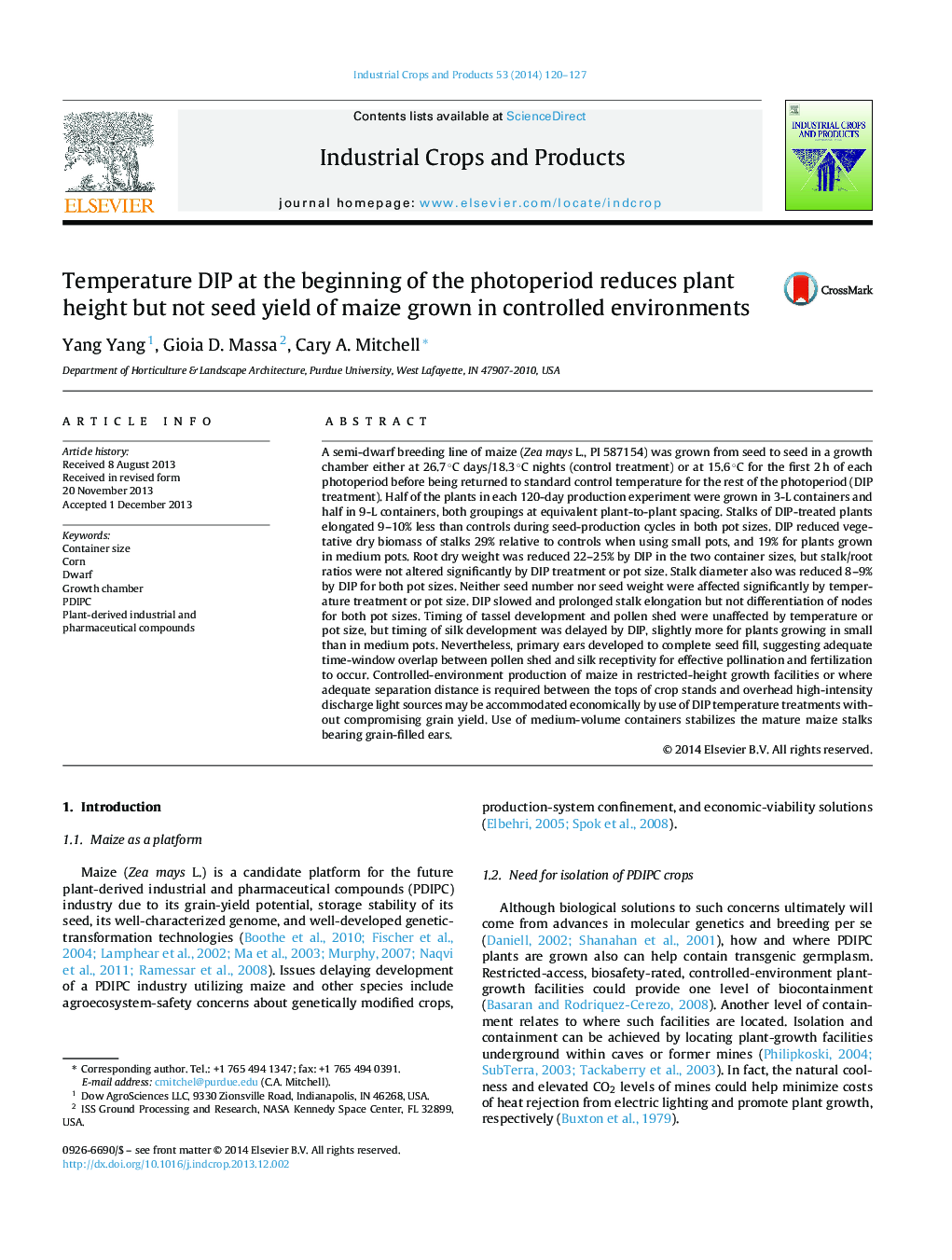| Article ID | Journal | Published Year | Pages | File Type |
|---|---|---|---|---|
| 4513525 | Industrial Crops and Products | 2014 | 8 Pages |
•Temperature DIP for the first 2 h of each day reduced stalk growth of maize.•Temperature DIP had no effect on grain yield of maize.•Medium-volume pots gave best height-yield DIP responses and best physical support of maize plants.
A semi-dwarf breeding line of maize (Zea mays L., PI 587154) was grown from seed to seed in a growth chamber either at 26.7 °C days/18.3 °C nights (control treatment) or at 15.6 °C for the first 2 h of each photoperiod before being returned to standard control temperature for the rest of the photoperiod (DIP treatment). Half of the plants in each 120-day production experiment were grown in 3-L containers and half in 9-L containers, both groupings at equivalent plant-to-plant spacing. Stalks of DIP-treated plants elongated 9–10% less than controls during seed-production cycles in both pot sizes. DIP reduced vegetative dry biomass of stalks 29% relative to controls when using small pots, and 19% for plants grown in medium pots. Root dry weight was reduced 22–25% by DIP in the two container sizes, but stalk/root ratios were not altered significantly by DIP treatment or pot size. Stalk diameter also was reduced 8–9% by DIP for both pot sizes. Neither seed number nor seed weight were affected significantly by temperature treatment or pot size. DIP slowed and prolonged stalk elongation but not differentiation of nodes for both pot sizes. Timing of tassel development and pollen shed were unaffected by temperature or pot size, but timing of silk development was delayed by DIP, slightly more for plants growing in small than in medium pots. Nevertheless, primary ears developed to complete seed fill, suggesting adequate time-window overlap between pollen shed and silk receptivity for effective pollination and fertilization to occur. Controlled-environment production of maize in restricted-height growth facilities or where adequate separation distance is required between the tops of crop stands and overhead high-intensity discharge light sources may be accommodated economically by use of DIP temperature treatments without compromising grain yield. Use of medium-volume containers stabilizes the mature maize stalks bearing grain-filled ears.
